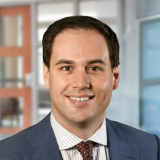Doctors are high income earners, by definition. But we are often not high net worth individuals. This is because long education and training pathways with limited income before making a high income leads to a stunted start to wealth building. Meanwhile external expectations, lifestyle creep, and delayed gratification can lead to poor spending decisions. Unfortunately, it is not uncommon for late career doctors to reach their 50s or 60s with limited wealth.
So, what are doctors in this situation to do? Is it too late?
Absolutely not! There is still plenty of time to build meaningful wealth and reach financial freedom to practice medicine on your own terms or to retire altogether. But the strategies you use do have to be tweaked.
Below, I share six ways that late career doctors can accelerate their wealth building and reach financial freedom, even with a shorter time horizon.
1) Change Your Mindset
For late career doctors who are behind in their wealth building to make the changes necessary to reach financial freedom, an important mindset is the first, and probably most important, step. We all wish we could go back in time and change something. But we can’t. It doesn’t matter how you got here. The only thing that matters is what you do moving forward!
Remember: You are in control. Take action on what is in your power. Don’t sweat the rest. And make sure to build a support system. You are not in this alone. Find like-minded individuals and share your experiences to learn from each other.
Ultimately, you may be behind but there is still time. But you can’t waste it.
2) Supercharge Your Savings Rate
The basic formula to build wealth is to create a margin between what you earn and what you spend and then to invest that margin so your money makes you money.
Let’s break this down into two parts:
Part 1: Create a savings rate
Part 2: Invest your money and use compound interest over the long run to your benefit
Unfortunately, part two of this formula is no longer to your advantage as your time horizon to retirement is shorter and less ideal. No worries. File this away under the factors that you cannot control.
Thankfully, the first part of the equation — your savings rate — is under your control. Even if it doesn’t necessarily feel like it.
My general rule of thumb is to create a savings rate of at least 20% of your pre-tax (gross) income. However, late career physicians need to supercharge this to at least 40-50% of gross income. Your savings rate is going to be the main driver now of your ability to reach financial freedom, not time. So optimize it.
Is this drastic? Yes. But being able to retire on your schedule is worth it.
To be successful you will need to carefully examine your spending, really defining what are truly “needs” versus “wants” in your life, and following a budget. Dramatic cuts to lifestyle spending will likely be necessary. You may even need to live like a resident again. Tradeoffs are necessary but worth it.
Once you create your savings rate, focus on paying off debt, maximizing tax advantaged retirement accounts like your 401k or 403b and backdoor Roth accounts, and contributing to your taxable investment accounts.
3) Invest Aggressively — but Smartly
Sure, time is no longer on your side. But now is not the time to invest wildly via day trading or swinging for the fences on some alternative investment. Timing the market and stock picking simply do not work. Investing broadly and via low cost index funds while staying in the market still wins the day.
To help maximize your returns, you are going to have to be a bit more aggressive in your portfolio of diversified funds. This is largely managed via your asset allocation, namely your portfolio’s stock:bond ratio.
Bonds, being more conservative investments that preserve rather than grow wealth, tend to weigh more highly in a late career doctor’s portfolio. However, if you are behind, you will need to maintain an asset allocation with a greater proportion of stock index funds. Stocks are riskier investments than bonds, which means they also offer greater potential returns in the long run in exchange for this risk. In this situation, you will have to take on a bit more of this risk to be more aggressive.
Now, this can backfire if your risk tolerance doesn’t align with your portfolio’s asset allocation and the first market downturn causes you to sell your stock investments. (Remember, market downturns and even bear markets are a normal cyclical aspect of the stock market.) If you feel that your risk tolerance won’t support the more aggressive portfolio necessary, a good idea is to gradually increase your risk (via your portfolio’s percentage of stocks) over time. You can’t avoid risk if you want to get to financial freedom, but you can manage it.
The biggest thing is that you don’t have time to waste. Avoid creating your savings rate and then sitting on a large sum of cash rather than investing it.
4) Delay Retirement Strategically
Now, I understand that the whole point of what we are doing here is working to get you into retirement. However, strategically delaying your retirement date can greatly accelerate your ability to build wealth into retirement.
How?
- Extra years of high income which fuels your savings rate AKA your wealth building engine
- Delaying withdrawals from your retirement accounts so they can compound more
- Greater social security benefits
This is also where a healthy mindset can come in. Retirement does not necessarily mean a binary of working full time versus not working full time. You can partially retire by taking off more time and working fewer hours while still making a high income and contributing to your nest egg. You could even work locum tenens with potential for higher pay and less stressful work.
There are tons of great options out there! Even with a yearly income of $200,000, an extra five years working gives you $1 million in potential dollars to accelerate your nest egg and get you to retirement.
5) Use Your Assets to Create Passive Income
Your income in retirement will come largely from two broad sources: withdrawals from your retirement accounts or passive income from income-producing assets.
One way to accelerate your wealth building in your later career if you are behind is to use your savings rate to buy income-producing assets that will regenerate your passive income during your retirement in perpetuity.
My favorite income-producing asset is cash-flowing real estate, whether done via an active or passive investing approach. Another cash-flowing option is to invest in oil and gas via mineral rights and/or working interest. Both of these options are also very tax friendly. Investing in real estate also gives you the opportunity to use advanced strategies like cost segregation, bonus depreciation, and real estate professional tax status (especially if you are working less hours clinically) to maximize tax efficiency.
As a doctor you also possess a different kind of asset, your knowledge and experience in medicine. There are tons of ways to use your expertise to generate income via physician side gigs. Is it 100% passive? No. But the work:income ratio is skewed way more in your favor compared to clinical work.
6) Plan with Purpose
Investing early in your career comes with the benefit of being able to make mistakes and recover relatively easily. However, for late career doctors, mistakes are more costly and can delay things by many years or significantly impact your well deserved retirement.
As such, your next moves need to be well planned and thought out. Now is not the time to experiment with different strategies and see what works. You need a plan that is personalized to your goals and your situation.
The first step is to develop your personal written financial plan. Write out your financial goals and timelines along with your resulting financial priorities. Then write out exactly how you will build your wealth — your savings rate, your asset allocation, your method of investing (where, how much, how often). Further, write out what you will not do (actively pick stocks, sell during a downturn, etc.). Lastly, write out a system to monitor your progress and check in.
Building wealth as a late career physician is 100% doable in any situation. That is the most important message here. Don’t fret.
However, it does take discipline, focus, and intentional effort. There is no magic wand that can get you to financial freedom in one stroke. Nor is time as much of a benefit as it could be. But there are small, consistent actions and habits that you can build and enact that will lead to outsized results, perhaps even building your nest egg more than you expected.
So, whatever your situation is, whether you are fresh out of residency or 10 years from retirement, the best time to build wealth is right now!
What are your spending needs versus wants? Share in the comments.
Jordan Frey, MD is a plastic surgeon in Buffalo, NY at Erie County Medical Center and the University of Buffalo. His clinical focus is on breast reconstruction and complex microsurgery. He is also the founder of The Prudent Plastic Surgeon, one of the fastest growing finance blogs. There, he shares his journey to financial well-being with a goal of helping all physicians reach financial freedom, practicing on their own terms.
Illustration by Jennifer Bogartz







